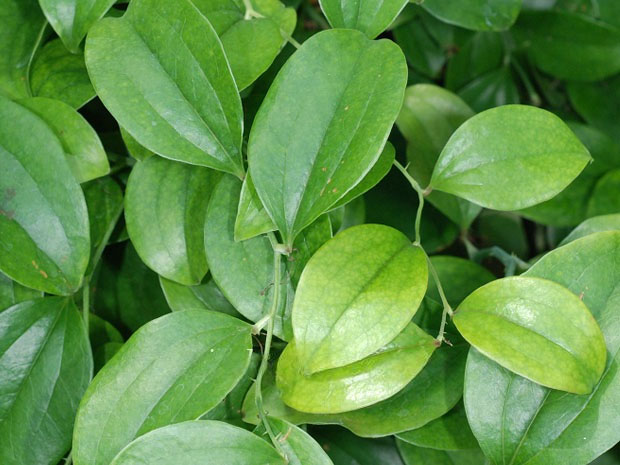
China Root
Genus: Smilax
Botanical name: Smilax china
PLANT NAME IN DIFFERENT LANGUAGES
Sanskrit: Madhusnuhi, Dweepantaravacha
Hindi: Chopchini
English: China root
Malayalam: Cheenapavu, Pavu
MEDICINAL PROPERTIES
China root has a hard, large, knotty, uneven rhizome, blackish externally, pale coloured or whitish internally. Stem without support, about 3 feet high, but growing much taller if it has a bush to cling to. Leaves thin, membranous, round, five-nerved acute or obtuse at each end, mucronate at points. Stipules distinct obtuse; umbels greenish yellow, small ten-flowered; fruit red, size of bird cherry. This is the commercial China root, used as a substitute for Sarsaparilla. It is in large ligneous pieces 2 to 6 inches long and about 2 inches in diameter. Odourless, taste at first slightly bitter and acrid like Sarsaparilla. The root-stocks yield a yellow dye with alum and a brown one with sulphate of iron.
The root is alterative, antiscrophulatic, carminative, depurative, diaphoretic, diuretic and tonic. It is considered useful when taken internally in the treatment of old syphilitic cases and is also used for certain skin diseases, including psoriasis, rheumatoid arthritis, gout, enteritis, urinary tract infections, skin ulcers etc. Large doses can cause nausea and vomiting, which is valuable in weakened and depraved conditions due to a poisoned state of the blood. The root is harvested in the autumn and dried for later use.
